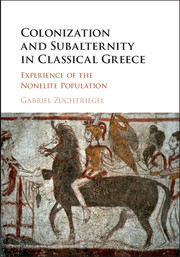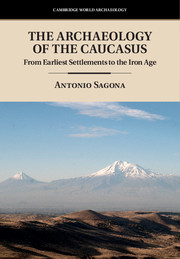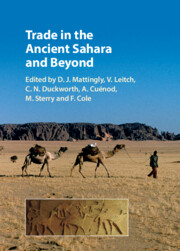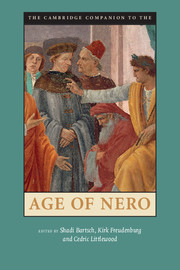Refine search
Actions for selected content:
23990 results in Ancient history
3 - What made Islamic Trade Distinctive, as Compared to Pre-Islamic Trade?
- from Part I - Connectivity and Networks
-
-
- Book:
- Trade in the Ancient Sahara and Beyond
- Published online:
- 17 November 2017
- Print publication:
- 30 November 2017, pp 80-100
-
- Chapter
- Export citation
Introduction
-
- Book:
- The Archaeology of the Caucasus
- Published online:
- 17 November 2017
- Print publication:
- 30 November 2017, pp 1-18
-
- Chapter
- Export citation
7 - Saharan Exports to the Roman World
- from Part I - Connectivity and Networks
-
-
- Book:
- Trade in the Ancient Sahara and Beyond
- Published online:
- 17 November 2017
- Print publication:
- 30 November 2017, pp 189-208
-
- Chapter
- Export citation
13 - Pottery and Trade in North and Sub-Saharan Africa during Late Antiquity
- from Part III - Trade in Inorganic Materials
-
-
- Book:
- Trade in the Ancient Sahara and Beyond
- Published online:
- 17 November 2017
- Print publication:
- 30 November 2017, pp 369-392
-
- Chapter
- Export citation
Chapter 3 - Transition to Settled Life: The Neolithic (6000–5000 BC)
-
- Book:
- The Archaeology of the Caucasus
- Published online:
- 17 November 2017
- Print publication:
- 30 November 2017, pp 84-131
-
- Chapter
- Export citation
Preface
-
- Book:
- The Archaeology of the Caucasus
- Published online:
- 17 November 2017
- Print publication:
- 30 November 2017, pp xiii-xvi
-
- Chapter
- Export citation
9 - Textiles and Textile Trade in the First Millennium AD
- from Part II - Trade in Organic Materials
-
-
- Book:
- Trade in the Ancient Sahara and Beyond
- Published online:
- 17 November 2017
- Print publication:
- 30 November 2017, pp 231-258
-
- Chapter
- Export citation
Part III - Trade in Inorganic Materials
-
- Book:
- Trade in the Ancient Sahara and Beyond
- Published online:
- 17 November 2017
- Print publication:
- 30 November 2017, pp 285-440
-
- Chapter
- Export citation
5 - Ships of the Desert, Camels of the Ocean
- from Part I - Connectivity and Networks
-
-
- Book:
- Trade in the Ancient Sahara and Beyond
- Published online:
- 17 November 2017
- Print publication:
- 30 November 2017, pp 131-155
-
- Chapter
- Export citation
15 - Glass Beads in Trans-Saharan Trade
- from Part III - Trade in Inorganic Materials
-
-
- Book:
- Trade in the Ancient Sahara and Beyond
- Published online:
- 17 November 2017
- Print publication:
- 30 November 2017, pp 414-432
-
- Chapter
- Export citation
Chapter 1 - The Land and Its Languages
-
- Book:
- The Archaeology of the Caucasus
- Published online:
- 17 November 2017
- Print publication:
- 30 November 2017, pp 19-33
-
- Chapter
- Export citation
1 - The Garamantes and the Origins of Saharan Trade
-
-
- Book:
- Trade in the Ancient Sahara and Beyond
- Published online:
- 17 November 2017
- Print publication:
- 30 November 2017, pp 1-52
-
- Chapter
- Export citation
Part I - Connectivity and Networks
-
- Book:
- Trade in the Ancient Sahara and Beyond
- Published online:
- 17 November 2017
- Print publication:
- 30 November 2017, pp 53-208
-
- Chapter
- Export citation
Index
-
- Book:
- Trade in the Ancient Sahara and Beyond
- Published online:
- 17 November 2017
- Print publication:
- 30 November 2017, pp 441-450
-
- Chapter
- Export citation
Chapter 7 - The Emergence of Elites and a New Social Order (2500–1500 BC)
-
- Book:
- The Archaeology of the Caucasus
- Published online:
- 17 November 2017
- Print publication:
- 30 November 2017, pp 298-377
-
- Chapter
- Export citation

Colonization and Subalternity in Classical Greece
- Experience of the Nonelite Population
-
- Published online:
- 18 November 2017
- Print publication:
- 26 October 2017

The Archaeology of the Caucasus
- From Earliest Settlements to the Iron Age
-
- Published online:
- 17 November 2017
- Print publication:
- 30 November 2017

Trade in the Ancient Sahara and Beyond
-
- Published online:
- 17 November 2017
- Print publication:
- 30 November 2017

Protecting the Roman Empire
- Fortlets, Frontiers, and the Quest for Post-Conquest Security
-
- Published online:
- 17 November 2017
- Print publication:
- 07 December 2017

The Cambridge Companion to the Age of Nero
-
- Published online:
- 16 November 2017
- Print publication:
- 09 November 2017
